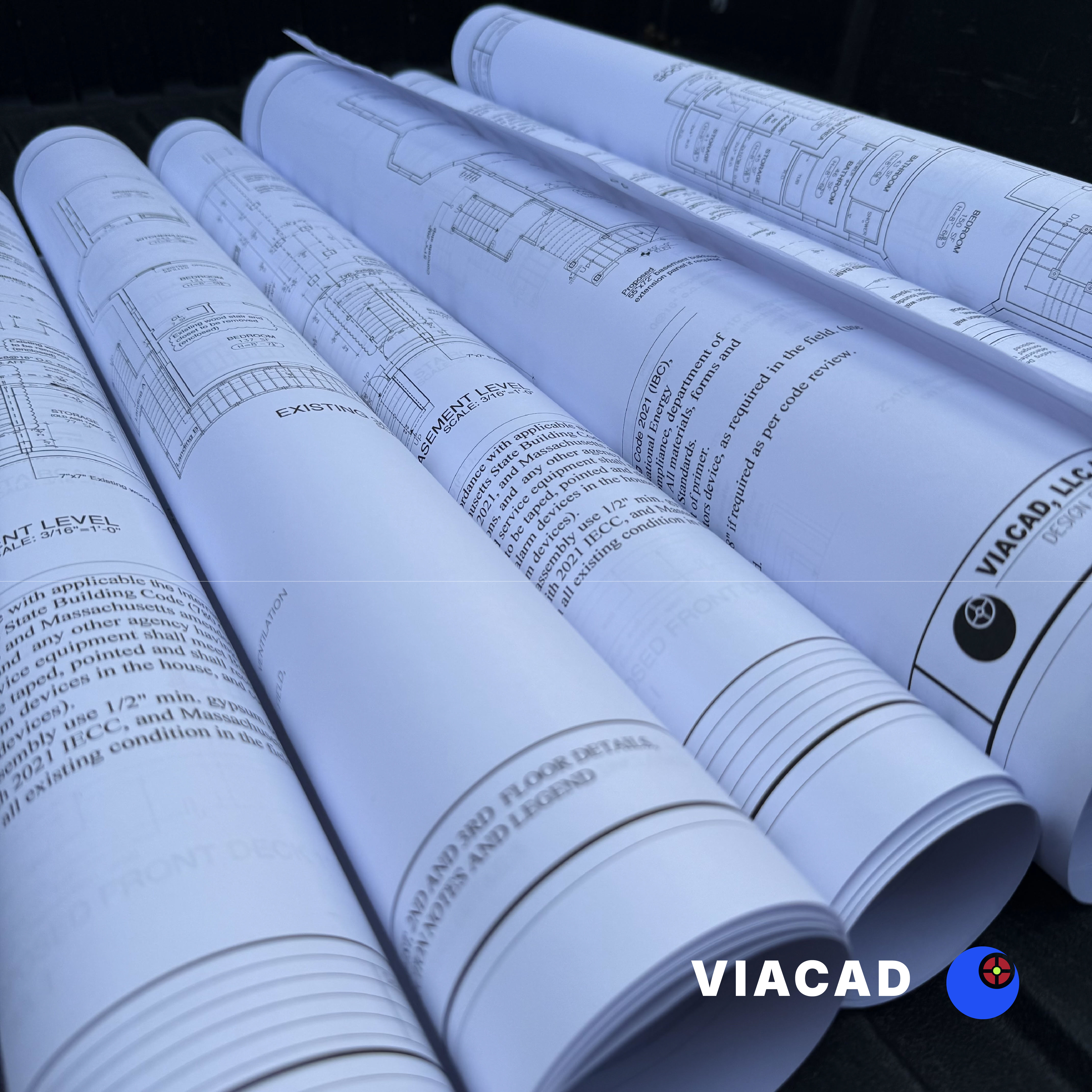
NOTE: VIACAD, LLC specializes in developing and producing detailed building plans (construction blueprints) for both residential and commercial projects across Massachusetts with more than 18 years of experience in design & construction producing professional permit-ready drawings for homeowners, builders, developers, and businesses.
Understanding how a geothermal heat pump works in Massachusetts is essential for homeowners and builders seeking energy-efficient and cost-effective heating and cooling solutions. Geothermal heat pumps, also known as ground source heat pumps, leverage the earth's constant temperature to provide clean heating and cooling throughout the year. In this article, we will explore the technology behind geothermal heat pump systems, their benefits in the Massachusetts climate, and how they compare to other heating options like air source heat pumps and natural gas.
NOTE: Information provided here is for educational purposes only.
A geothermal heat pump is an advanced heating and cooling system that transfers heat between a building and the ground. Unlike traditional air source heat pumps that extract heat from the outside air, geothermal heat pumps utilize the stable temperature beneath the earth's surface, typically between 45°F and 55°F in Massachusetts. This constant temperature provides an efficient energy resource for heating in the winter and cooling in the summer.
The core components of a geothermal heat pump system include a ground heat exchanger (often a network of pipes called a ground loop), a heat exchanger inside the building, and the heat pump unit itself. The ground loop circulates a water or antifreeze solution through underground pipes, absorbing or dissipating heat depending on the season. This heat is then transferred to the building's heating system, providing hot water and warm air during cold months or removing heat to cool the home during warmer periods.
Massachusetts experiences cold winters and warm summers, making efficient heating and cooling systems vital. Geothermal systems are particularly well-suited for this climate because the ground temperature remains relatively constant year-round, unlike the fluctuating outside air temperature that air source heat pumps rely on. This stability allows geothermal heat pumps to operate more efficiently, reducing operating costs and minimizing energy consumption.
During the winter, the geothermal heat pump extracts geothermal heat from the ground through the ground loop and transfers it inside to warm the building. In the summer, the process reverses: the system absorbs heat from the building and transfers it back into the cooler ground, effectively cooling the home. This dual functionality eliminates the need for separate heating and cooling systems, offering a streamlined and energy-efficient solution.

While air source heat pumps are common and effective in milder climates, their efficiency can drop significantly in cold climates like Massachusetts due to the colder outside air. Geothermal heat pumps maintain high efficiency regardless of outdoor temperature because they rely on the earth's consistent ground temperature. This results in lower utility bills and reduced reliance on fossil fuels such as natural gas, which remains a common heating source in Massachusetts but contributes to greenhouse gas emissions.
Moreover, geothermal heat pumps require less maintenance than traditional heating systems and air source heat pumps. They have fewer moving parts exposed to harsh weather conditions, leading to a longer system life. From an environmental perspective, geothermal systems use renewable energy from the earth, making them a clean heating and cooling option that helps reduce a home's carbon footprint and combat climate change.
Installing a geothermal heat pump system involves careful planning and design, particularly considering soil conditions, available land area, and local regulations. The Massachusetts Department of Energy Resources and the Executive Office of Energy and Environmental Affairs provide guidelines and incentives to support the adoption of renewable energy technologies like geothermal systems.
For new construction projects, integrating a geothermal heat pump from the outset can be cost-effective and simplify the installation process. Existing homes and commercial buildings can also benefit from retrofitting, although site-specific factors such as the availability of space for ground loops and access to natural gas service may influence feasibility.
Geothermal heat pumps offer significant energy savings compared to conventional heating and cooling systems. By harnessing the earth's renewable energy, these systems reduce electricity consumption and decrease dependence on fossil fuels. In Massachusetts, where natural gas prices can fluctuate and gas utilities face regulatory changes, geothermal systems provide a stable and cost-effective alternative.
The use of geothermal heat pumps aligns with Massachusetts' commitment to reducing greenhouse gas emissions and promoting clean energy. The Massachusetts Department of Energy Resources and the Executive Office of Energy and Environmental Affairs encourage the adoption of geothermal technology as part of broader climate change mitigation strategies.
Understanding how a geothermal heat pump works in Massachusetts reveals its advantages as an energy-efficient, cost-effective, and environmentally friendly heating and cooling solution. By leveraging the earth's constant temperature and advanced heat pump technology, homeowners and builders can enjoy lower utility bills, reduced maintenance, and a smaller carbon footprint. Whether for new construction projects or renovations, geothermal heat pump systems represent a smart investment in the future of energy-efficient living in New England.

Contact us if you'd like to commission or collaborate with VIACAD, LLC.
Currently accepting projects in Massachusetts.